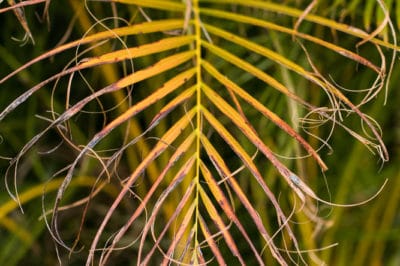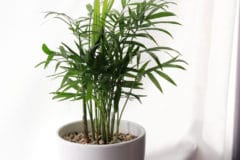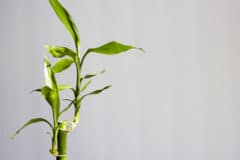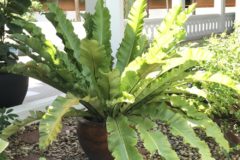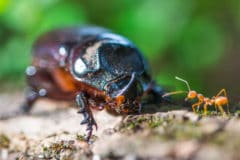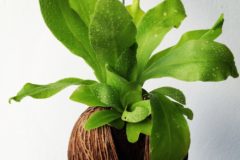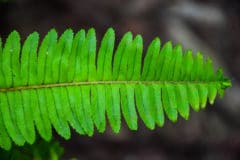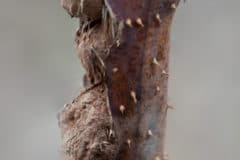Environmental Conditions
Areca palms need the following conditions to flourish:
- Bright light, including some direct sunlight.
- Soil that dries between waterings; never over-water.
- Peat-based soil that drains readily.
- Regular fertilizer while growing; at least twice a season with dilute liquid fertilizer.
- No fertilizer at all in winter.
- Periodic trimming to remove dead fronds.
Checking the Fronds
Healthy areca palm canes should be a golden yellow. Canes that are brown or gray or that have no golden tone may be dead. Slice a very thin strip from the surface bark with a sharp knife. If the wood underneath is green, the cane is still alive and can remain. A dark color under the bark indicates the cane is probably dead and should be removed.
Cutting Back the Palm
Once you’ve determined that a cane is dead, prune the palm. Small canes can be cut off with a sharp pair of garden clippers. You may need a saw to remove larger canes. If in doubt, use a saw to minimize damage to the plant. Make the cut at ground level. If trimming more than one plant, disinfect the clippers or saw between plants with dilute bleach; rinse well.
When Not to Trim
The individual leaves of an areca palm should not be trimmed. The tips of the palm fronds may turn brown, but that’s a natural part of the plant’s growth. If you trim frond tips back, the entire frond may cease growing. Don’t trim canes unless they are clearly dead or damaged. If you prune too many live canes, it can kill the whole plant.
Professional Tip: You should only trim fronds off any type of palm when they are completely brown and dead. Fronds showing any type of green are still giving nutrients to the entire tree. Many times, areca palms are self-cleaning and dead fronds fall from the tree without the need for pruning.
Repotting the Areca Palm
Areca palms are generally not long-lived when grown indoors. They are very sensitive to the build-up of fertilizer salts and they need more light than the average indoor gardener can supply. They may do better in a sun-room or greenhouse but in many cases, these plants will only live a year or two. For this reason and because they do well when under-potted, they are unlikely to need repotting.
Problems With Areca Palms
Well-grown areca palms are very attractive but they often develop problems when grown indoors. Dead fronds result from inadequate light; cut the fronds and more to a brighter area. Aphids, mites, mealy bugs, scale and whitefly may attack; treat with insecticidal soap. Yellowing or declining palms result from leaf-spotting fungi attacks and a generally short lifespan. Replace the plants.
